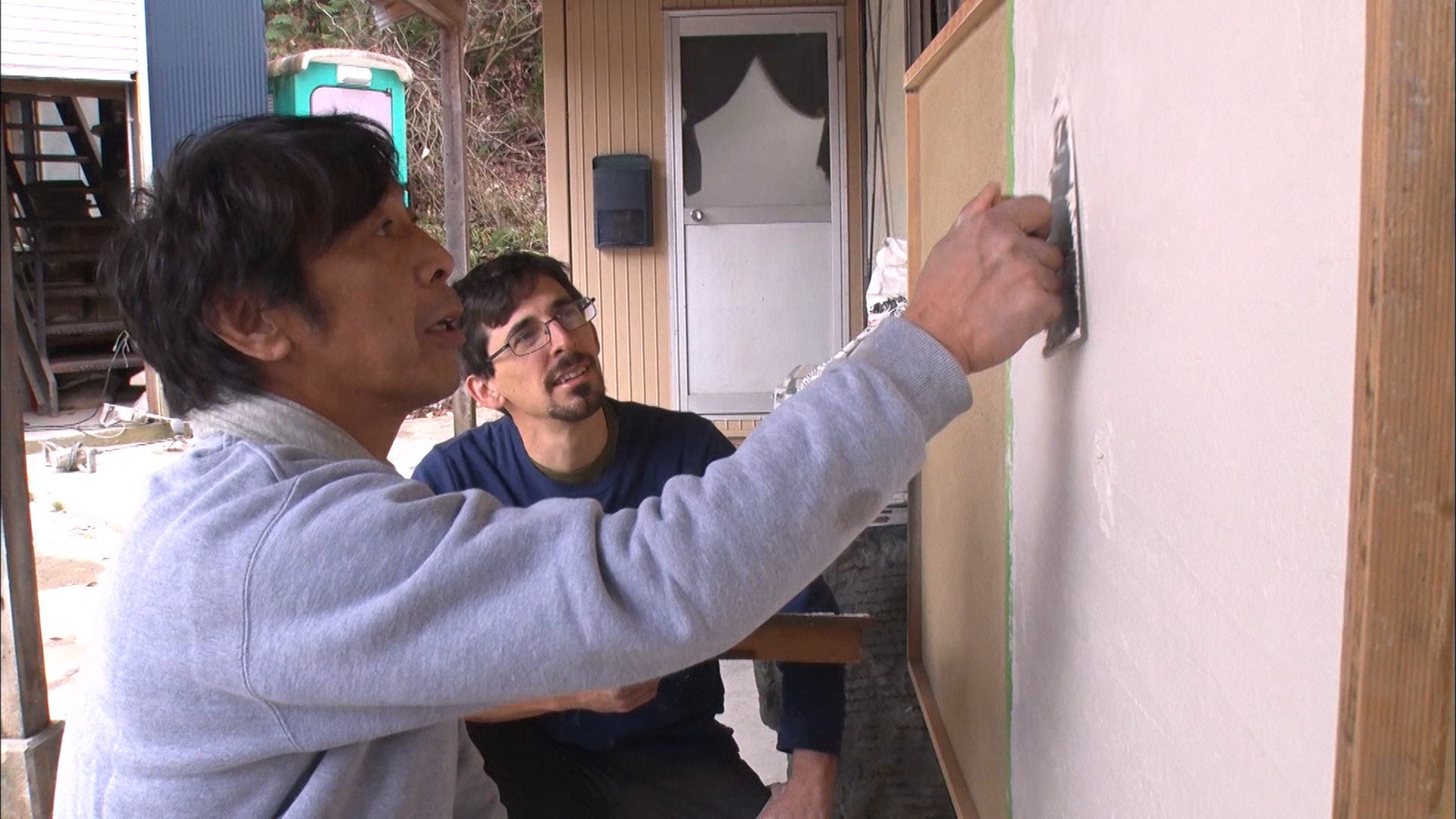Shikkui is a type of lime plaster used throughout Japan, with deceptively simple ingredients and a wide range of applications. In use since the 6th century, shikkui is a very thin finish application typically used to protect large uninterrupted wall surfaces on castles and storehouses (or ‘kura’). It can be polished to a high level and because it has a high fiber content and frequently has no aggregate added, it’s flexible, too.
During the week of filming for “Who Wants to Come to Japan?”, I visited a renowned Japanese sakan, Shuhei Hasado and he taught me more about how to make shikkui and apply it.
What is Shikkui Lime Plaster?
Shikkui is nothing more than hydrated lime, seaweed glue, hemp fibers, and water. Hydrated lime, once combined with water and applied to a wall, reverts back to the same chemical composition as limestone through the process of carbonation. It’s highly durable and weather-resistant, much more so than clay. Lime also preserves the ability of a wall to transpire moisture.
Because lime is energy-intensive to produce, it was historically used very sparingly and only for structures of great importance or value.
Short strands of fine hemp fiber provide lots of tensile strength and are visible in the finish. Seaweed glue is used to prolong the set-up time of lime, giving workers more time to finish a large wall area before the plaster hardens.
The glue can be made by boiling and straining dry seaweed, or by purchasing a powder and combining it with hot water. The resulting liquid is quite viscous (and smells somewhat pleasantly of the ocean!)
Shikkui Lime Plaster Recipe
To mix shikkui, the hemp fibers are fluffed up by beating them with a stick for a few minutes. The fibers are super fine, so it’s helpful to get air introduced into them as they will get bound up really easily when mixing in other ingredients.
The seaweed glue is then prepared and added to the fiber, and finally the dry lime and water. Hasado-san had me mix up the plaster old-school style, with a plaster tub and hoe, which was definitely an arduous affair. However, a drill with a paddle bit is a much easier way to go about it.
As expected, ratios can vary depending on the plasterer and the job, but Kyle has a recommended recipe on his excellent website:
- Hydrated Lime 20-23Kg (approx. 44-50lbs)
- Powdered Tsunomata Seaweed Glue 400-800g
- Hemp Fibers 500-1000g
Applying Shikkui
The application method I learned from Hasado-san entails applying two very thin coats, nearly back to back. Hasado-san stressed the ability to work quickly and efficiently, and not to linger on any one small section for too long. An improper mix or poor application and compression can result in lots of hairline cracks. A well-finshed shikkui is smooth, perfectly flat, with fibers evenly distributed across the surface.
Once the second pass has set up somewhat, it’s compressed with a trowel, resulting in a beautiful, smooth, glossy finish.
I don’t feel too qualified to go in much more detail than that, but at least you get the general idea. If you want a lot more detail, please check out another of Kyle’s excellent tutorials here.
Shikkui: Castles, Storehouses, and More
Shikkui isn’t commonly used in modern construction, but there are heaps and heaps of it still going up at the Himeji Castle site. Himeji Castle has been carefully preserved since it was originally constructed, and the main castle was entirely redone in shikkui from stone to roof tiles only a few years ago. The sheer volume of plaster work at the castle compound is astonishing. I’ll have another post showing some really cool plaster details soon, but here’s what I’m talking about:
Hasado-san took me to a restored storehouse he plastered twenty years ago, with amazing plaster molding details finished with shikkui. The main bulk of the storehouse has this yellow-tinted shikkui, and all of the molding and window detailing is compressed shikkui. It looks like the walls were plastered last week — amazing how well it’s held up. This was a beauty from head to toe.
It’s extremely difficult to get pictures of something so subtle as a shikkui finish, so… unfortunately, the best case scenario is getting to see a finished wall up close and personal.
I hope to do some shikkui finishes on our small timber frame structure later this year. For now, I have this practice wall set up to do more testing… thanks to Hasado-san for sharing his knowledge with me!















